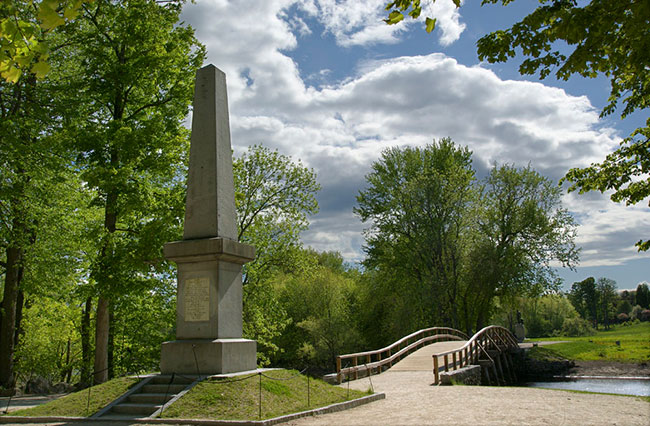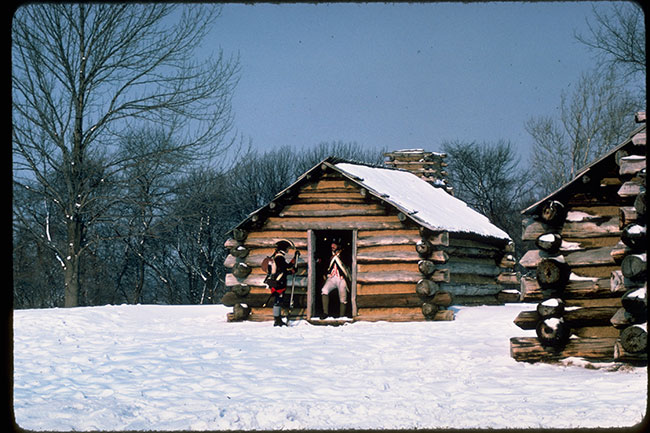John Ferling is one of the premier historians on the American Revolution. He has written numerous books on the battles, historical figures, and events that led to American independence, most recently with contributions to The American Revolution: A Historical Guidebook. Here, he answers questions and discusses some of the lesser-known aspects of the American Revolution.
What was the greatest consequence of the American Revolution?
The greatest consequence of the American Revolution stemmed from Jefferson’s master stroke in the Declaration of Independence. His ringing declaration that “all men are created equal” and all possess the natural right to “life, liberty, and the pursuit of happiness” has inspired generations hopeful of realizing the meaning of the American Revolution.
What was the most underrated battle of the Revolutionary War?
King’s Mountain often gets lost in the shuffle, but if Washington’s brilliant Trenton-Princeton campaign was crucially important, King’s Mountain was no less pivotal. Washington’s victory was America’s first in nearly a year, King’s Mountain the first of significance in three years. Trenton-Princeton was vital for recruiting a new army in 1777; King’s Mountain stopped Britain’s recruitment of southern Tories in its tracks. Enemy losses were nearly identical at Trenton-Princeton and King’s Mountain. Finally, Sir Henry Clinton thought the defeat at King’s Mountain was pivotal, and soon thereafter he told one of his generals that with the setback “all his Dreams of Conquest quite vanish’d.”
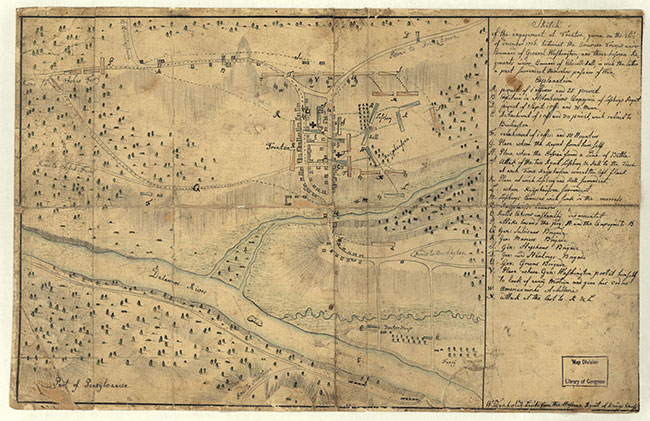
Sketch of the Battle of Trenton by Andreas Wiederholt (b. 1752?). Public domain via Wikimedia Commons.
What’s the one unanswered question about the American Revolution you’d most like answered?
The war in the South in 1780 and 1781 is shot through with mysteries. Why did Benjamin Lincoln stay put in Charleston in 1780? He might have withdrawn to the interior, as did those defending against Burgoyne’s invasion, or he might have made a stand behind the Ashley River — as Washington did on the Brandywine — and then retreated to the interior.
Why in the summer that followed did Horatio Gates immediately take the field when his army was so unprepared and he faced no immediate threat? Why did Gates in August at Camden position his men so that the militia faced Cornwallis’s regulars?
Why in 1781 did not Sir Henry Clinton order General Cornwallis back to the Carolinas or summon him and most of his army to New York?
With all the mistakes, maybe the biggest mystery of the war is how anyone won.
What is your favorite quote by a Revolutionary?
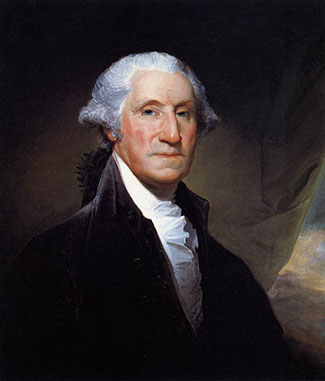
George Washington by Gilbert Stuart. Public domain via Wikimedia Commons.
Aside from the egalitarian and natural rights portions of Jefferson’s Declaration of Independence, I have two favorite quotations from revolutionaries. One is that of Captain Levi Preston of Danvers, Massachusetts. When asked why he had soldiered on the first day of the war, he responded: “[W]hat we meant in going for those Redcoats was this: we always had governed ourselves and we always meant to. They didn’t mean we should.” My second favorite is Washington’s remark on learning of Lexington and Concord: a “Brother’s Sword has been sheathed in a Brother’s breast.”
Aside from John and Abigail, what was the best husband-wife duo of the Revolution?
If “best” means the duo that best aided the American Revolution, I am sure there must have been countless nameless men who bore arms while their spouses at home made bullets. But of those with whom I am familiar, I opt for Joseph and Esther Reed. He played an important role in Pennsylvania’s insurgency, served in the army and as Washington’s secretary, played a crucial role in the Continental Army’s escape after the Second Battle of Trenton, sat in the Continental Congress, and was the chief executive of his state for three years. She organized the Ladies Organization in Philadelphia in 1780 and published a broadside urging women not to purchase unnecessary consumer items, but instead to donate the money that they saved to aid the soldiery in the Continental army. Altogether, her campaign raised nearly $50,000 in four states.
What was the most important diplomatic action of the war?
The greatest consequence of the American Revolution stemmed from Jefferson’s master stroke in the Declaration of Independence. His ringing declaration that “all men are created equal” and all possess the natural right to “life, liberty, and the pursuit of happiness” has inspired generations hopeful of realizing the meaning of the American Revolution.
What is your favorite Revolutionary War site (battlefield, home, museum, etc.) to visit today?
If limited to choosing only one site, it would be Mount Vernon. For one thing, George Washington seemed to have a hand in almost everything that occurred in America from 1753 until his death in 1799. In addition, he was a farmer, a pursuit that is alien to most of us today. Mount Vernon includes an informative museum, a functioning distillery and mill, farm land, animals, gardens, and of course the mansion, which opens a window onto the life of a wealthy Virginia planter. Those who lived there as slaves are not overlooked and slavery at Mount Vernon is not whitewashed. Nearly a full day is required to take in everything and at day’s end a visitor who comes without much understanding of the man and his time will leave having received a decent and illuminating introduction to Washington and eighteenth century life and culture.
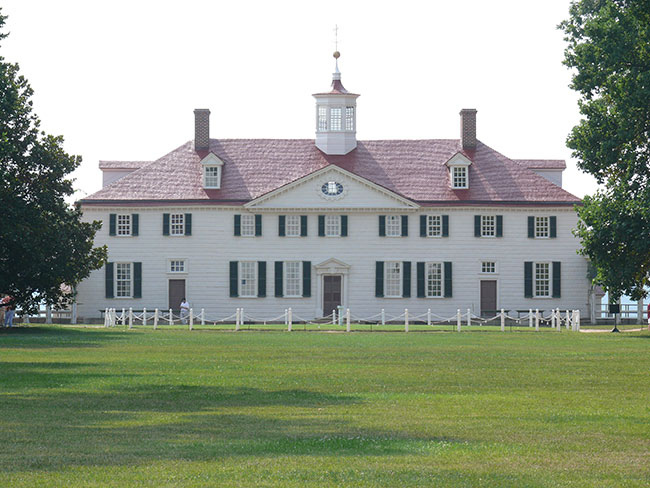
Mount Vernon by Ad Meskens. CC-BY-SA-3.0 via Wikimedia Commons.
Propaganda was important during the Revolution. What is your favorite propaganda item?
Had there been an Abraham Zapruder armed with a motion picture camera on Lexington Green on 19 April 1775, we might know precisely what occurred when the first shot was fired in the Revolutionary War. But we will never know if that shot was fired accidentally, whether it was fired by British soldiers following orders, or as some alleged if it was fired by a colonist in hiding. What is known is that soon after that historic day the Massachusetts Committee of Safety deposed witnesses of the bloody event, from which it cobbled together an account showing that the regulars opened fire after being commanded to “Fire, by God, Fire.” That account circulated before the official British report was published. In a day when knowledge of who fired the first shot to launch a war was still important, the Massachusetts radicals had scored a propaganda master stroke.
If you could time travel and visit any American city, colony, or state for one year between 1763 and 1783, which would you choose?
I would choose to be living in Boston in 1763. I would like to know what people in the city were thinking about Anglo-America prior to the Sugar and Stamp Acts and how many had ever heard of The Independent Whig. I would like to visit grog shops to discover whether there was a hint of rebellion among the workers and whether they thought Samuel Adams would ever amount to anything. While there, perhaps I could catch a game at Fenway when the St. Louis Browns come to town.
In your opinion, what was George Washington’s biggest blunder of the war?
A book about Washington’s blunders would be large, but his most baffling mistake occurred in September and October 1776. Although fully aware that he was soon to be trapped in Harlem Heights by a superior British army and utterly dominant Royal Navy, Washington made no attempt to escape his snare. His letters at the time indicate an awareness of his dilemma. They also suggest that in addition to his customary indecisiveness, Washington was not just thoroughly exhausted, but in the throes of a black depression. These assorted factors likely explain his potentially fatal torpor. He and the American cause were saved from the looming disaster by the arrival of General Charles Lee, whose advice Washington still respected. Lee took one look and urged Washington to get the army out of the trap. Washington listened, and escaped.
In your opinion, who was the most overrated revolutionary?
Franklin is the most overrated. He was not unimportant – indeed, I think he was a very great man – but as he was abroad for years, he played a minor role in the insurgency between 1765 and 1775. Furthermore, while Franklin was popular in France, Vergennes was a realist who acted in the interest of his country. It is ludicrous to think that Franklin pulled his strings.
Who was the most underrated revolutionary?
General Nathanael Greene is so underrated that many today are unaware of him. But he was the general that Washington turned to for good advice, made personal sacrifices to try to straighten out the quartermaster corps, and waged an absolutely brilliant campaign in the Carolinas between January and March 1781. It was his heroics in the South that helped drive Cornwallis to take his fateful step into Virginia, and to his doom. Had it not been for Greene, it is difficult to envision a pivotal allied victory on the scale of Yorktown in 1781, and without Yorktown the war would have had a different ending, possibly one that did not include American independence.
Was American independence inevitable?
Chatham and Burke knew how independence could be avoided, but it involved surrendering much of Parliament’s power over the colonists. Burke also glimpsed the possibility of using proffered concessions to play on the divisions in the Continental Congress, which included many delegates who opposed a break with Britain. Burke’s notion might have worked. But from the beginning the great majority in Parliament thought that in a worst case scenario the use of force would bring the colonists to heel. Given the political realities of the day, war appears to have been virtually inevitable. Even so, independence very likely would have been prevented had Britain had an adequate number of troops in America in April 1775 or a capable general to lead the campaign for New York in 1776, someone like Earl Cornwallis.
A version of this Q&A first appeared on the Journal of the American Revolution.
John Ferling is Professor Emeritus of History at the University of West Georgia. He is a leading authority on late 18th and early 19th century American history. His latest book, Jefferson and Hamilton: The Rivalry that Forged a Nation, was published in October 2013. He is the author of many books, including Independence, The Ascent of George Washington, Adams vs. Jefferson: The Tumultuous Election of 1800, Almost a Miracle: The American Victory in the War of Independence, Setting the World Ablaze: Washington, Adams, Jefferson, and the American Revolution, John Adams: A Life, and A Leap in the Dark: The Struggle to Create the American Republic. He lives in Atlanta, Georgia.
Subscribe to the OUPblog via email or RSS.
Subscribe to only American history articles on the OUPblog via email or RSS.
Subscribe to only history articles on the OUPblog via email or RSS.
The post A Q&A with John Ferling on the American Revolution appeared first on OUPblog.



